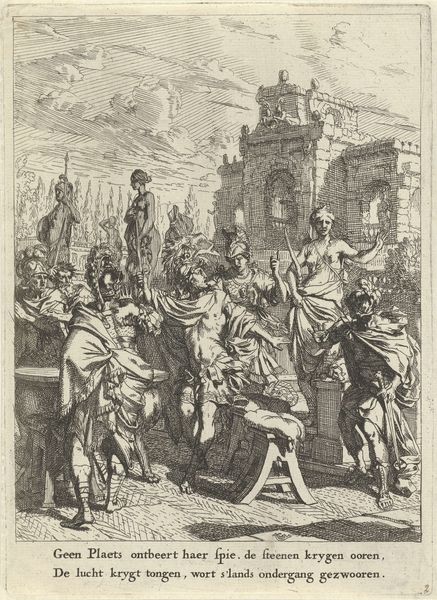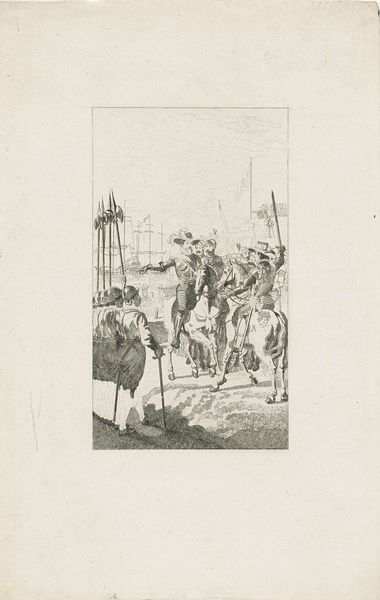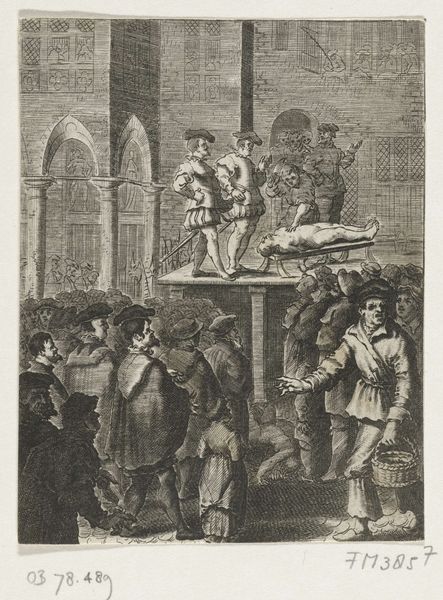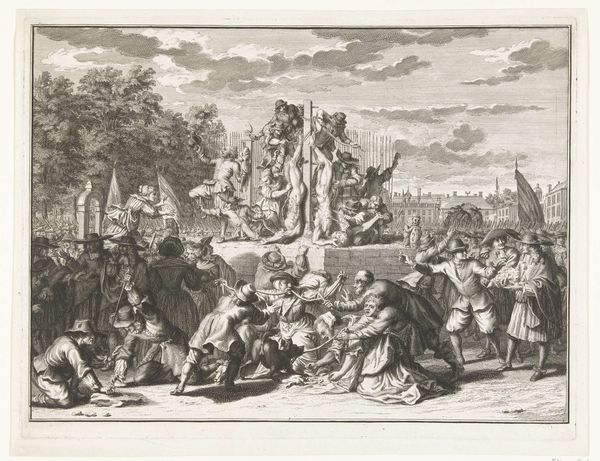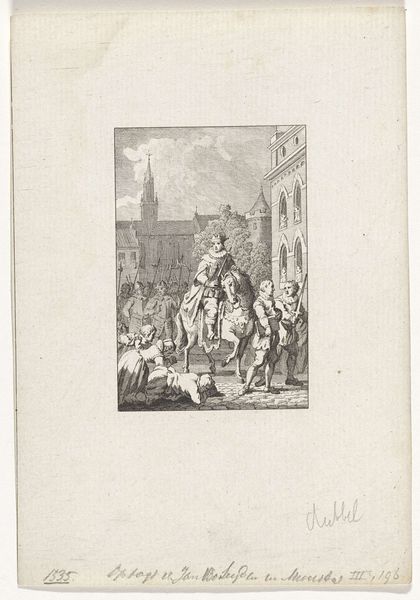
print, etching
#
dutch-golden-age
# print
#
etching
#
cityscape
#
genre-painting
#
realism
Copyright: National Gallery of Art: CC0 1.0
Curator: Ah, yes, James McBey's "Hoorn Cheesemarket" from 1910. A wonderful example of his etching work. Editor: It's... busy. Chaotic even. All those scribbled lines, like a nervous energy buzzing across the scene. But in a strangely appealing way. Curator: Indeed. Consider the medium itself. Etching allows for fine detail and subtle gradations, mimicking the textures and light of this bustling market square. McBey masterfully utilizes line work to depict the varied fabrics and forms—the clothing, architecture, and those meticulously rendered cheese wheels. Notice how he uses a higher contrast for areas of interest. Editor: I'm drawn to the social dynamics playing out here. The labor involved, of course, the production and exchange. I find myself asking questions about who profits and the everyday economics woven into such a spectacle of cheese! Are the workers being properly compensated for the value that they produce? Curator: Good question. The interplay of shadow and light directs our gaze—we find a natural focal point around the cheese sellers in the bottom right foreground and then a little further back, on the figures under the statue. A vertical perspective draws the viewer up the marketplace from front to back. What strikes me most is the textural contrasts achieved by varying line weights, making the static figures come to life in the piece. Editor: Right, and if we really zoom in, notice how much detail there really is. McBey really documents all this social hustle-and-bustle: people are bartering, haggling, working. Curator: We might consider his training as an etcher. Understanding his artistic journey will lend us an intimate understanding of this kind of cityscape artwork. Editor: Thinking about McBey as a Scottish artist rendering this slice of Dutch culture raises some further questions: was there anything political at play here? What does this mean within a Scottish tradition? Curator: This reminds us how even a seemingly simple market scene reflects a complex web of social relationships and processes. We started with a simple aesthetic appreciation for an interesting etching and ended up talking about complex production processes in art, labor laws and possible trade law and internationality? A wonderful journey. Editor: Absolutely, reminding us that visual art is always so much more than meets the eye.
Comments
No comments
Be the first to comment and join the conversation on the ultimate creative platform.



